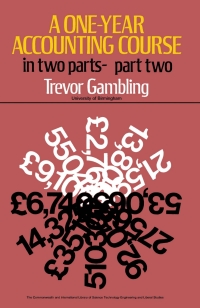What conditions would justify the assumption of a constant contribution margin per
customer? Do you think those conditions are likely to hold here? To support your
conclusions, do a scatter plot of the sample data, and then use the sample data to run a
regression of purchase costs (dependent variable) on purchase revenues (independent
variable). [Hint: What is the meaning of the intercept term of your regression results?]

Cc: MEMORANDUM TO: Jordan Wright, General Manager, Village Hill Spirits, Inc. FROM Grace Baker, Operations Manager RE: Extending store hours of operation for Village Hill Spirits DATE: November 12, 2017 Julie Lam I have now completed a study of the economics of extending the store closing hours for Village Hill Spirits. On the basis of my analysis, I recommend that we extend store hours to the statutory limit of 4:00 a.m. each morning. This will result in an increased annual profit of more than $40,000 before taxes. Even after the initial investment of $21,000 to upgrade security, we will still have increased profit. I have reached this conclusion based on the following information and analysis. When we kept the store open until 4:00 a.m. on an experimental basis, we discovered the store got an average of five customers per hour even during the last hour of business, from 3:00 to 4:00 a.m. The number of customers was at least as large during each previous hour. (Attachment 2 summarizes the results of our experimentation with hours of operation.) Julie's sample of invoices shows that, on average, a typical customer makes purchases of about $29. (Note: all dollar figures in this memo are approximate.) From my experience running the store, I can say that this number is consistent overall hours of operation (ie., a day customer's buying decisions are not substantially different from an evening customer's buying decisions). Out of the $34. about $25 goes toward our purchase of the alcohol, which leaves us with a contribution margin of $9.00 per customer. This figure does not include the cost of keeping the store open an additional hour. Therefore, the contribution margin of the additional units sold during the 3:00 to 4:00 a.m. period is $9.00 x 5 customers = $45.00. By keeping the store open for the additional hour from 3:00 to 4:00 a.m., we would increase our revenues by $45.00. We must compare this to the added cost of keeping the store open one more hour. The overhead cost of the additional hour is almost nothing (since the refrigerators must be kept running overnight anyway), so the only substantial cost added is the wage of the clerks. By Gould state law, we must pay workers time-and-a-half, so our $14/hour clerks must be paid $21 each. The added cost of $42 is less than the added revenue of $45.00, and therefore, staying open until the last hour would increase our profits. The same is true for all previous hours as well. (These calculations are summarized in Attachment 3.) Comparing current profits with expected profits under my proposal, we will experience a profit increase of $127 per day, or $45,720 per year, before taxes. These figures are approximate, of course, because there are seasonal changes in alcohol purchases, and my estimates are based on experimentation during the last six months only. This may seem an unusual approach for maximizing our profit, but I'm pretty sure it's correct. In my economics classes at Gould State, I learned that profit increases whenever marginal revenue exceeds marginal cost. The marginal revenue is the additional revenue from doing one more of something in this case, one more hour of business), and the marginal cost is the additional cost from doing one more of something (again, one more hour of business) Attachment 1 Purchases and Purchase Cost for Randomly Selected Customers Julie randomly selected 60 customer invoices - 30 from day customers, 30 from evening customers. The purchase revenue and cost data are shown below. (For example, the first day customer made a purchase of $32.50, and the alcohol purchased cost $23.89 to stock.) DAY Purchase Revenue 32.50 35.22 39.99 23.08 39.48 30.55 24.77 30.13 31.16 34.67 32.37 40.71 33.07 43.86 45.88 42.31 36.69 43.59 31.38 32.09 26.78 26.39 33.84 32.39 25.29 21.11 27.60 37.79 38.37 27.14 Cost 23.89 25.90 30.40 16.53 28.32 20.17 18.49 21.11 24.91 25.75 25.03 29.61 23.31 29.51 36.39 29.83 29.89 28.51 23.55 21.66 17.93 18.38 22.96 25.24 17.72 14.41 22.23 25.50 29.00 21.31 EVENING Purchase Revenue 40.29 34.66 35.87 36.40 30.95 33.69 33.82 34.92 35.15 32.89 36.30 38.44 32.49 34.91 52.78 37.43 30.20 37.99 26.90 47.19 33.48 44.20 33.52 37.15 35.81 37.61 30.29 31.07 24.35 34.90 Cost 32.00 25.20 24.01 28.60 24.95 22.42 25.89 23.07 25.39 22.99 28.63 29.51 25.36 25.26 37.08 28.81 19.86 26.54 19.19 34.88 25.12 36.09 22.76 26.24 26.79 25.68 24.51 23.27 19.50 28.07 Attachment 3 Marginal Revenue and Marginal Cost Analysis MR Added Profit 90 62 Hour 10-11 11-12 12-1 1-2 New Customers 10 8 6 5 44 MC 28 28 42 42 42 72 54 45 45 45 Added Profit per Year 22,320 15,840 4,320 1,080 1,080 1,080 45,720 2-3 ununun 12 3 3 3 127 5 3-4 5 42 The marginal revenue (MR) for the hour is the contribution margin per customer ($9.00) multiplied by the number of customers. Note that if the marginal revenue is calculated in this way, it already takes into account the alcohol cost. 2 The marginal cost (MC) for the hour is the wages for two clerks: $14 per hour before midnight, $21 per hour after midnight 3 There are 360 days in one business year









